- Share via
SAN DIEGO — As tourists and locals flocked to the shorelines of Imperial Beach and Coronado this summer, many faced a tough decision — whether to swim in waters that new signs warned “may contain sewage.”
San Diego County public health officials had for decades made that call for beachgoers. Loud yellow and red placards have clearly told people to stay out of the water as a result of pollution from Tijuana, which routinely turns waves brown and stinky.
This story is for subscribers
We offer subscribers exclusive access to our best journalism.
Thank you for your support.
However, swimmers, surf camps and junior lifeguard programs have had to make that choice for themselves since the July 4 weekend, when authorities started posting the new blue “warning” signs instead.
“My husband thought it was fine,” said Linda Beals, 51, of Cincinnati, sitting on the sand in front of the Hotel del Coronado on Wednesday as she debated whether to take a dip. “But I don’t want to go home with an infection.”

So how polluted are South Bay beaches when those new signs are posted?
The answer’s complicated. But experts and local officials agree the water is probably not any more dirty than in past years.
The situation started after the county rolled out a new water-quality test in early May. The technology uses DNA, rather than the traditional “culture method” in which scientists examine water samples for bacterial growth in a lab.
The new test started showing levels of bacteria that took officials by surprise. Some, such as Imperial Beach Mayor Serge Dedina and county Supervisor Nora Vargas, elected to stay out of the water, in part to set a good example for residents. Other leaders haven’t been deterred.
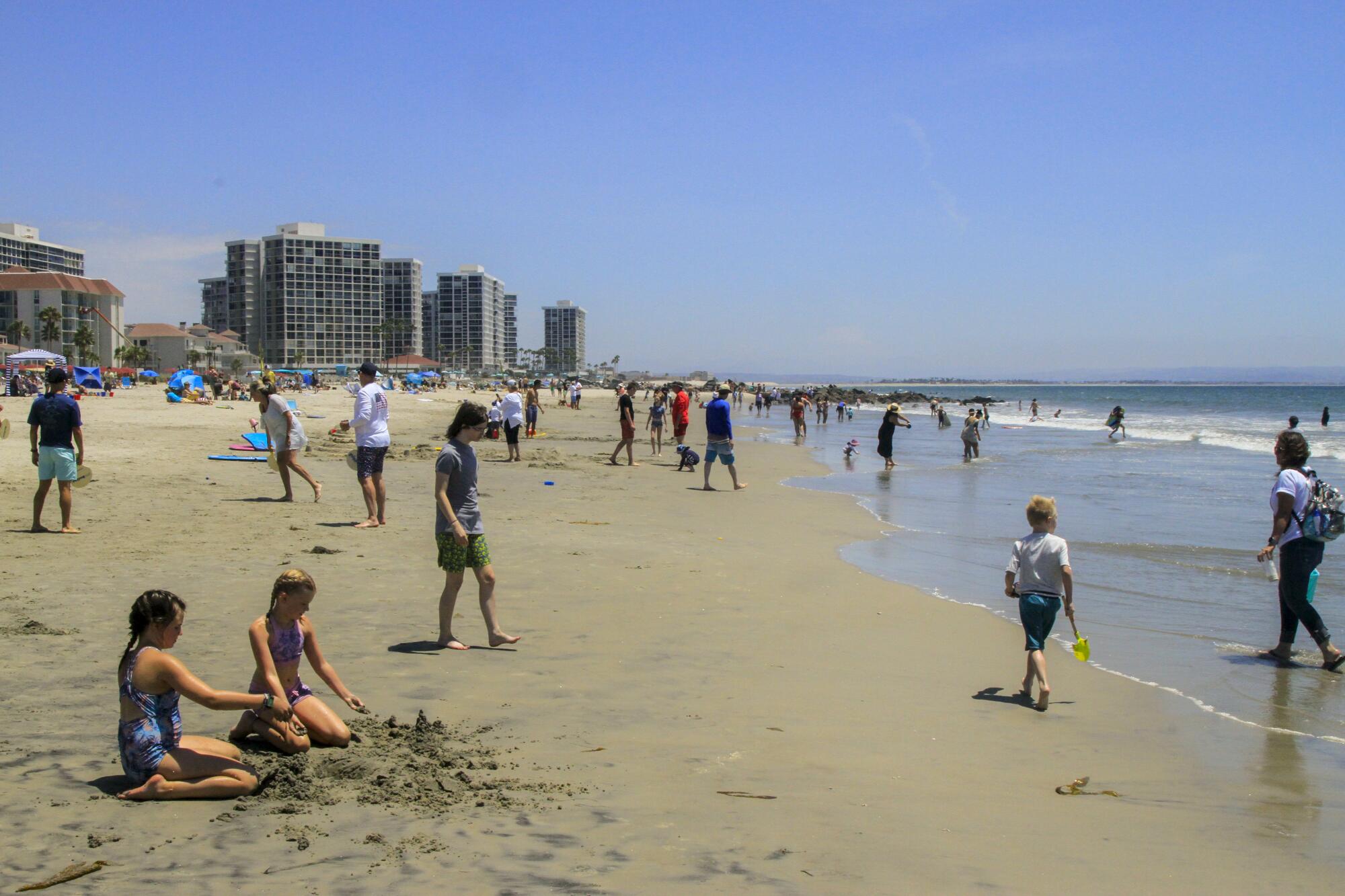
“When In-N-Out added calorie counts to their menu, it didn’t change what was in their burger, it just gave customers more information about what was in their food,” said county Supervisor Terra Lawson-Remer, whose district includes Coronado.
“As a born and raised San Diegan and avid surfer, if the warning category is in effect but the waves are truly epic, I’m probably going to continue surfing,” she added.
The DNA testing initially triggered a string of beach closures and yellow and red signs across the South Bay. The mayors of Coronado and Imperial Beach quickly raised strong objections to having their shorelines shuttered so abruptly, especially because side-by-side testing using the old culture method showed beaches were meeting state health standards for bacteria.
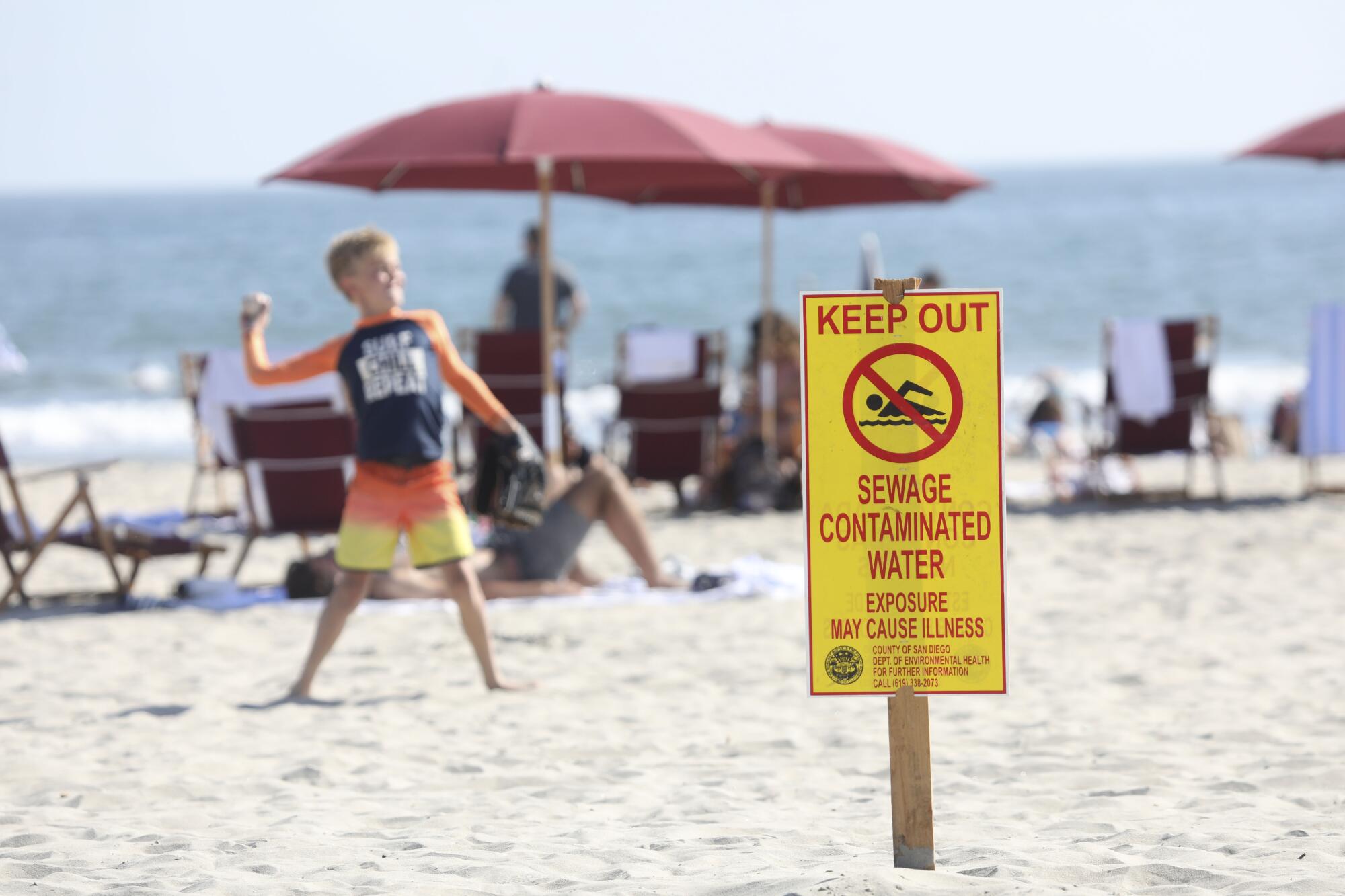
The question was repeatedly raised: Is the new test overly sensitive?
San Diego is the first coastal county in the nation to institute a federally approved water-quality test using the DNA technology.
Given the uncharted waters, some experts have wondered whether the county’s largely self-imposed threshold for what constitutes a dangerous level of bacteria was set too low when developing the DNA test. Unlike the culture method, the new technology can pick up bacteria even if it’s dead or damaged.
“I think the test needs to be recalibrated,” said Falk Feddersen, a professor of oceanography at UC San Diego’s Scripps Institution of Oceanography, who’s worked with the county on identifying sources of sewage coming from Mexico. “These bacteria they test for aren’t bacteria that are pathogenic.”
Public health officials at the county have not yet offered to fine-tune the test, a process that could only “take a few months,” according to regulators with the U.S. Environmental Protection Agency.
“The justification for the revised threshold would need to be supported with the same scientific rigor as the threshold being used right now,” the agency said in an email.
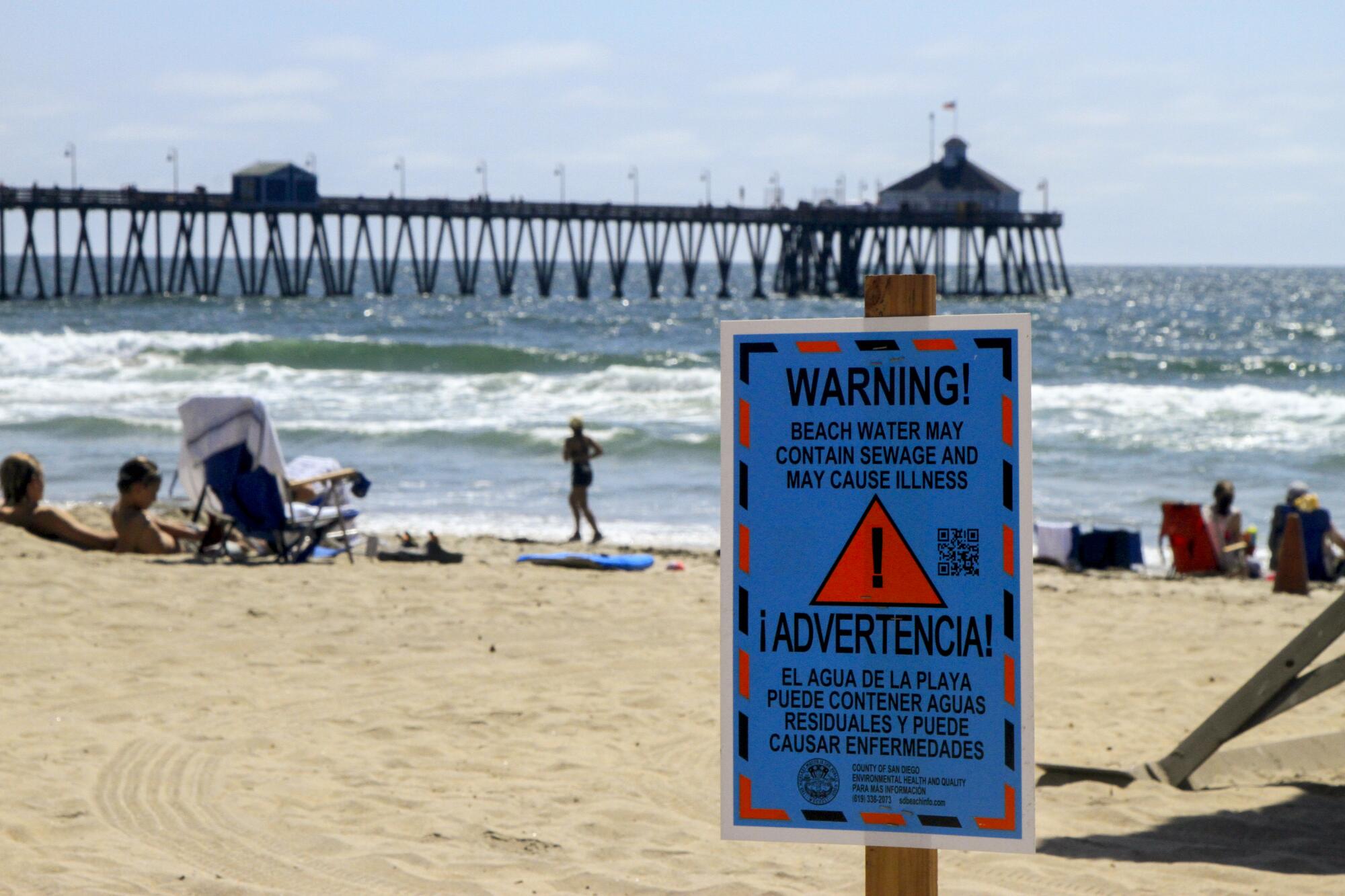
Instead, county leaders responded to the backlash by lifting the closures and instituting the new warning system. Officials have said they are still reserving the authority to restrict swimming completely if sewage can be smelled or seen in the water.
San Diego County declined multiple interview requests for this story but said in an email that when the blue signs are posted, there is a “potential risk to public health.” The county also provided some details on its testing process, including that it samples the water at its South Bay beaches daily and other shorelines weekly.
The presence of bacteria is considered an indicator for pathogens, such as E. coli, Vibrio and salmonella, according to officials. Exposure to such infectious agents can result in diarrhea, fever, respiratory disease, meningitis and even paralysis.
The situation has been confusing for many, including lifeguards who are now responsible for posting three different signs: yellow for sewage; white for bacteria but no sewage; blue for bacteria and maybe sewage.
The situation is fluid, with signs of each type often going up and coming down every week.
“I don’t know exactly why they did the blue sign,” said Jason Lindquist, captain of the Imperial Beach Lifeguards. “There was a joke about adding a fourth sign saying that the water is clean, but I don’t have room in my garage.”
Many beachgoers, especially tourists, have been unaware of the situation, such as Guy George who was recently visiting from Sacramento. He said he hadn’t noticed the blue sign just several yards away from where he and his wife were relaxing on the sand in Imperial Beach.
“I would imagine that the lifeguards would warn us if there were any problems with the water,” said the 75-year-old man.
Youth programs, on the other hand, have been keenly aware. In July, the Cal State Games Jr. Lifeguard competition in Coronado was canceled because of the warning signs, as was the city’s annual Fourth of July Rough Water Swim. Similarly, junior lifeguard programs have had to relocate.
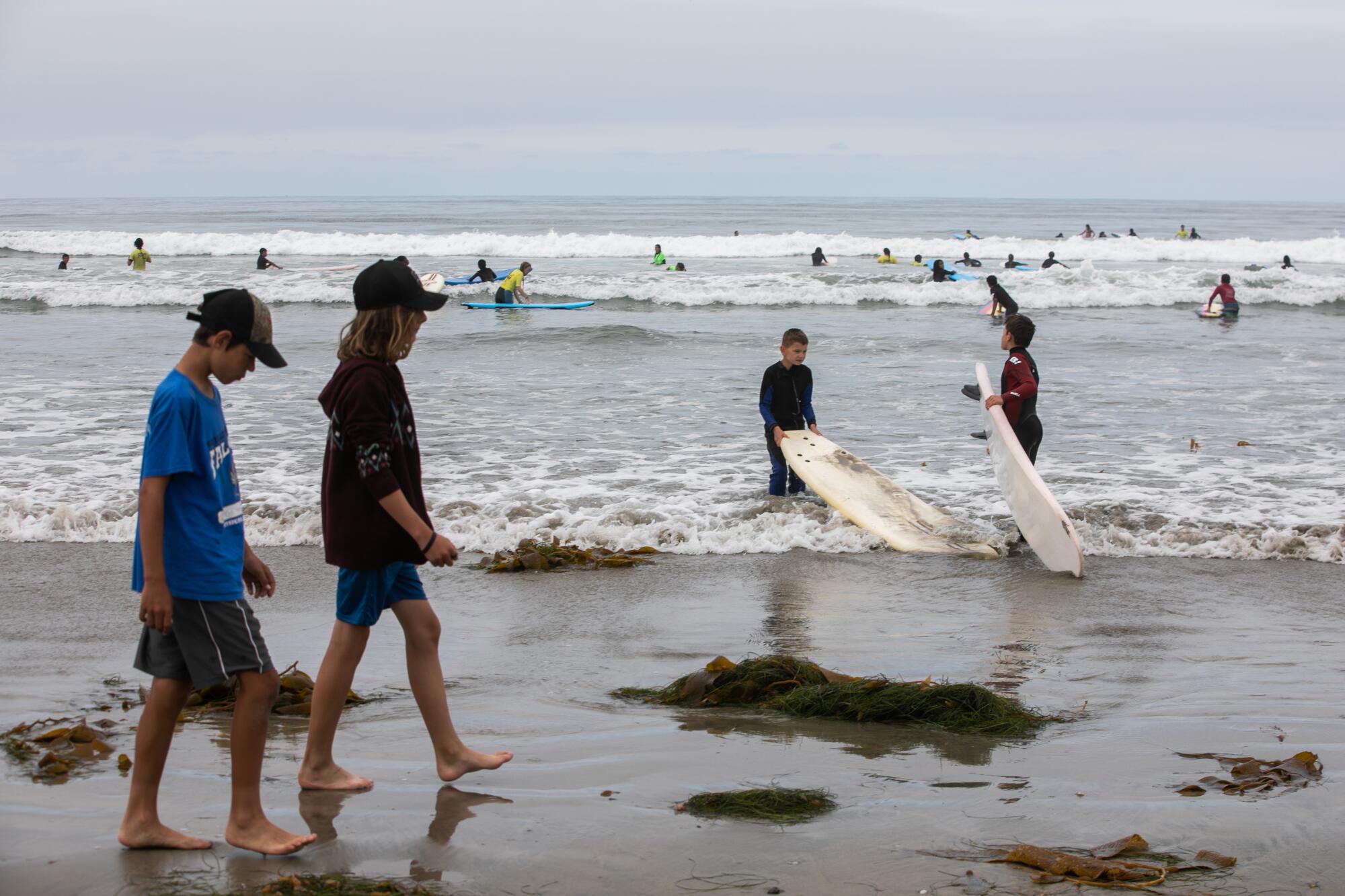
On Friday, several dozen children at YMCA’s Camp Surf just north of Imperial Beach were finally catching waves again after a roughly week-long hiatus. When the campers can’t get in the water, they can still participate in sandcastle competitions, archery, rock climbing and other sports.
However, enrollment is down, and some people have asked for refunds this summer, said Jamie Cosson, executive director of the program. “I have a lot of parents ask me, ‘Can you tell me when it’s going to be open?’,” he said, “but it’s really hard to predict, and that’s a really hard way to do business.”
Meanwhile, Coronado Mayor Richard Bailey said the new water testing won’t deter him from playing in the waves. “If I was good last summer, I feel very comfortable I’ll be good this summer.”
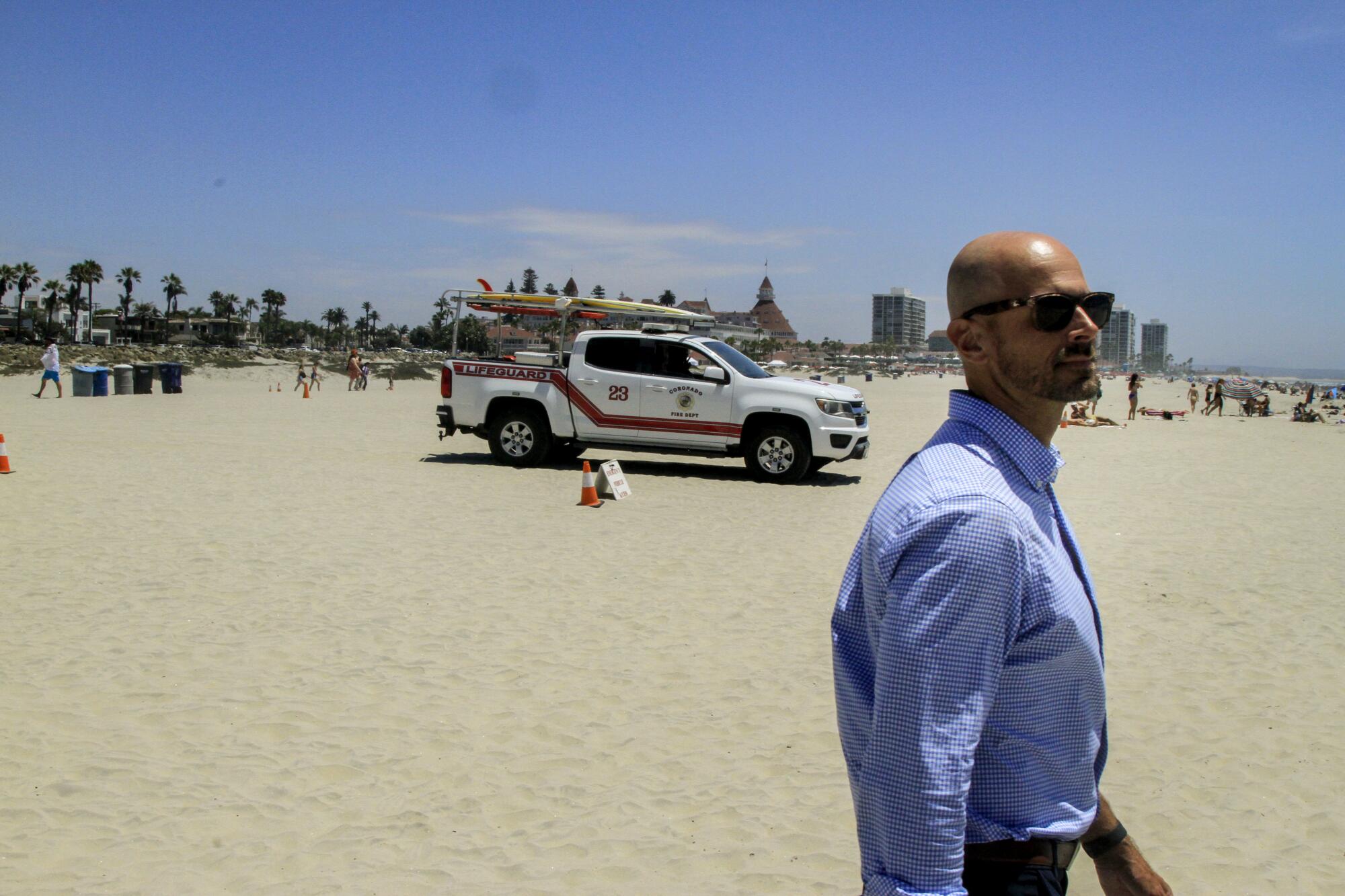
His city had pulled nearly all its blue signs by Wednesday morning, even though the county didn’t officially lift the shoreline’s warning status until later that evening. Bailey said they didn’t act until testing showed the water was safe.
In the past, county-mandated closures have largely occurred when rain sent sewage- and chemical-tainted runoff gushing through the Tijuana River into the estuary in Imperial Beach and out to sea.
Surfers had long complained about polluted water during summer months, as well, but it wasn’t officially documented until late last year. That’s when Feddersen at Scripps Institution of Oceanography spearheaded a study that used special dye to track plumes of sewage floating up the coast from a crumbling wastewater treatment plant about six miles south of the border at a place called Punta Bandera.
People in Imperial Beach have known about the issue for years. But few if any realized the extent. EPA now estimates the aging facility is spewing 25 million to 35 million gallons of mostly raw sewage into the ocean a day.
“We need some type of emergency action taken to deal with Punta Bandera,” said Imperial Beach Mayor Serge Dedina. “Look, if this was happening in Del Mar or La Jolla or Carlsbad, it would’ve been fixed yesterday.”
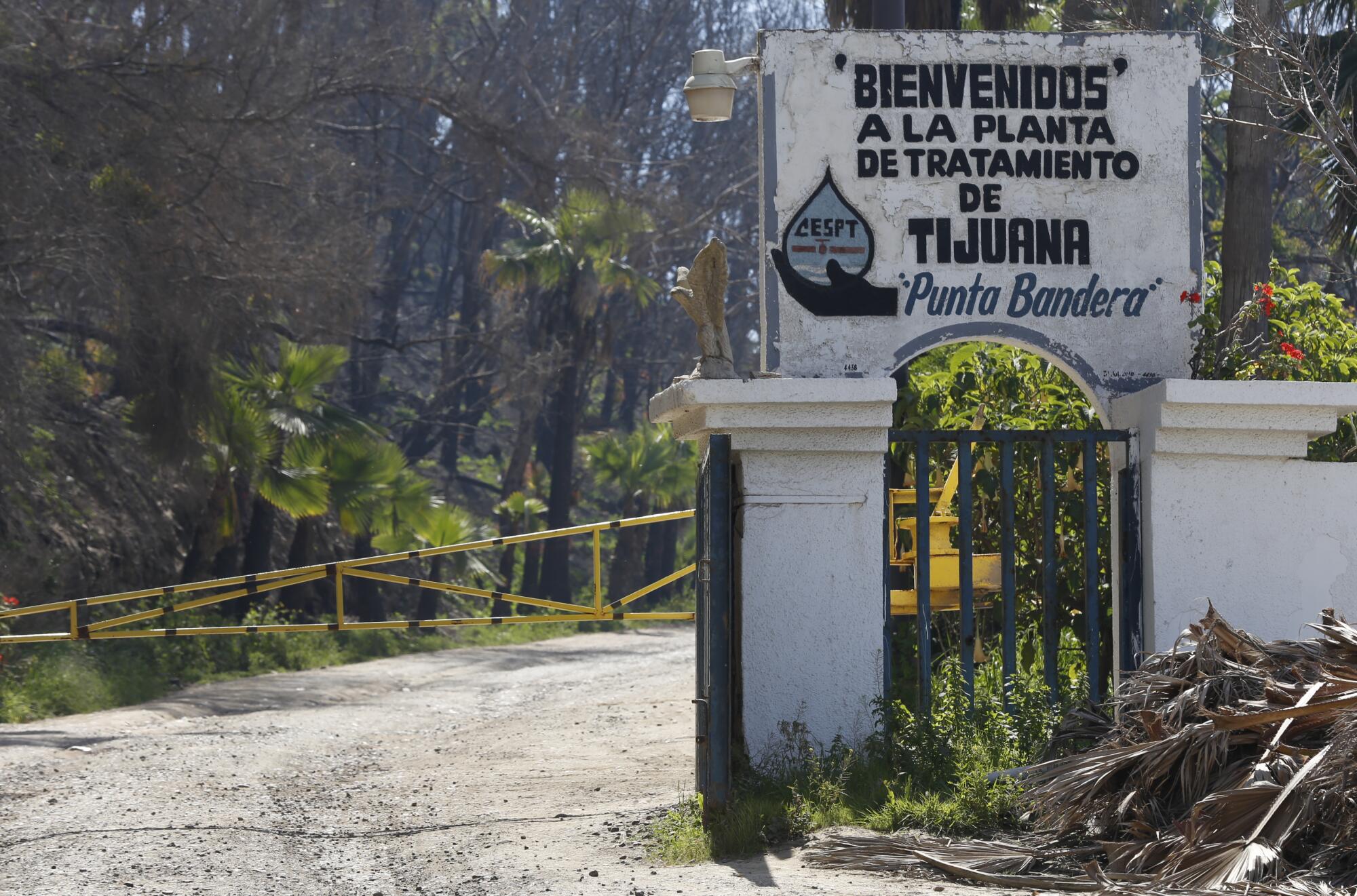
The EPA has drafted a $630-million blueprint to stem the cross-border pollution. One major proposal is to reroute the wastewater currently pumped to Punta Bandera to an expanded South Bay International Wastewater Treatment Plant along the border in San Diego. The agency recently launched an environmental review exploring that and other options. Projects could break ground in the next three to five years.
Mexico is also developing plans to replace the facility, known as the San Antonio de los Buenos wastewater treatment plant, according to EPA officials. Baja officials have repeatedly promised to build a new plant, but nothing has yet materialized.
Current beach closures can be tracked at sdbeachinfo.com.
More to Read
Sign up for Essential California
The most important California stories and recommendations in your inbox every morning.
You may occasionally receive promotional content from the Los Angeles Times.










